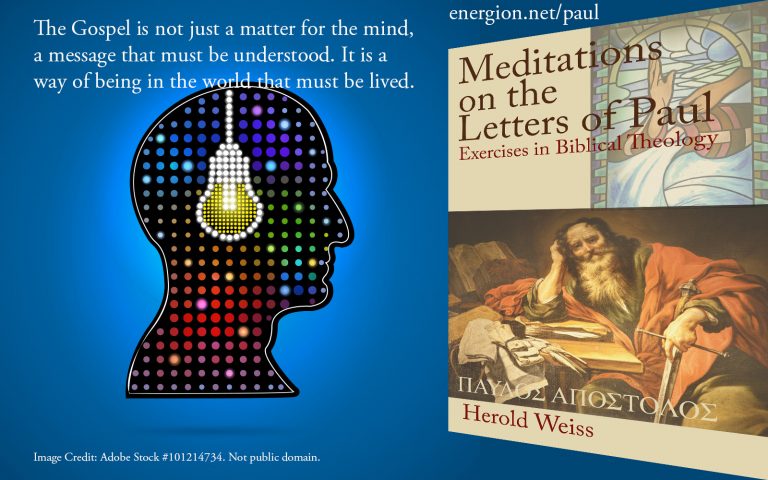Thoughts on Leviticus 1
I’ve now read through the first chapter of Leviticus using the Cornerstone Biblical Commentary on Leviticus, Numbers, and Deuteronomy. I want to caution readers that I’m reflecting on and responding to the text of the commentary, and not just repeating it. If I don’t identify a thought as coming from Baker (David W. Baker, author of the Leviticus portion), don’t blame him for it. I will try to clearly identify those portions.
I decided to add a bit to my study by trying a new way to use the Orthodox Study Bible, which I have already reviewed negatively. Since the translation tends to annoy me, especially in the Old Testament, I’m reading the Biblical text in Greek from Rahlf’s (on which the introduction says the translation was based), and then reading just the notes from the Bible. I’ll comment on this a bit more below.
One theme I’m following throughout the commentary is worship. Baker used the phrase “handbook for worship” back in the introduction (p. 4) and I want to see how he works that out. In his comments on the first chapter, he has been very clear. On page 24 he introduces the question “What can we take from this chapter that will help us in our worship?” He continues with about 1 1/3 pages of discussion. I think a key to this is his comment that:
…The whole being, not just the intellect, would have been caught up in this celebration of worship for the God who held life itself in his hand, who gave blessings and heard prayers, and who even smelled the scent of his people’s worship.
Is not our contemporary worship too often more cerebral than sensory, thinking about God rather than celebrating him? … (p.25, emphasis mine)
Baker goes on to indicate that beliefs and thinking are important as well, but that we are perhaps not balanced.
What struck me throughout, and was mentioned in other sources I read on this book as well, is that the tabernacle worship was very visual, or indeed more broadly sensory. One doesn’t get the impression of a quiet place of meditation, or a building of one’s personal relationship. One’s gift is public, presented in the community at a tabernacle in the center of the community, to a God who manifests his presence in that tabernacle.
All of the introductions also emphasize how revelation comes from the tabernacle. God shows his presence there and he speaks to the community from there. Leviticus is largely presented as divine speech, and this speech comes from that center (Lev. 1:1). Often we–and I am certainly guilty here–present hearing from God as an individual activity to be done in our times of devotion, personal prayer, and reflection. Leviticus presents a very different picture of God speaking in, from, and about the various rituals of corporate worship.
The introduction from the New Interpreter’s Study Bible points out something interesting about the structure. They note that the book has 36 speeches of God, introducted by “the LORD said.” In addition, there are twelve major summarizing statements which tend to divide the book into 12 parts. These kinds of structural elements are often subject to subjective judgment (NISB points out two minor summaries as well), but do indicate an intentional and careful creation of the final form of the book, irrespective of how one dates it.
In reading from three sources this morning, the Cornerstone commentary, the NISB, and the Orthodox Study Bible, there was one issue on which three divergent opinions were expressed. Baker understands the laying on of hands as indicating that the animal is a substitute (p. 22), and he dismisses the idea of indication of ownership. The NISB, on the other hand (p. 148, note on Lev. 1:4) states that this laying on of hands indicated ownership.
The Orthodox Study Bible phrases it differently, and I think this expression is consistent with Orthodox theology. (Perhaps one of my Orthodox readers can confirm this for me or correct any error). It says:
Here, the worshiper placed his hand on the head of the animal and killed it, and in so doing united with the offering; for the animal’s death became the death of the offerer. … (p. 118, comment on Lev. 1:4)
I am going to keep those three expressions in mind as I continue this study. Which best expresses the understanding of sacrifice in Leviticus? In protestantism there is a certain desire to get a “pure” substitution out of Leviticus, but I don’t see that clear of an expression. On the other hand, Baker’s comment that ownership was already indicated by the worshiper bringing the animal, so what was added by laying on hands, is a cogent criticism of the “ownership” idea.
It seems likely to me that the idea of identification, which the OSB then carries forward to the identification of the believer in baptism with Christ’s death, is closer to the thought of Leviticus. Milgrom (150-153), however, makes a fairly strong case for hand-leaning as an indication of ownership, and dismisses identification because of its magical nature. This will be one to watch and think about as my study progresses.
As a final note, I did find the OSB much more usable when I did not read the translation. I’m going to continue the practice of reading the scripture from the Greek and then reading the notes while ignoring the translation for awhile.
Abbreviations:
OSB – Orthodox Study Bible
NISB – New Interpreter’s Study Bible
Milgrom – Milgrom, Jacob. Anchor Bible: Leviticus 1-16.
Baker – Leviticus portion written by David H. Baker, of the Cornerstone Biblical Commentary on Leviticus, Numbers, and Deuteronomy.



I hope I am able to follow you on this. I am glad you are referencing Milgrom – but it seemed to my distant memory that he had a notion that the altar is cleansed by the sacrifice. That seems magical also so I am not sure why he would object to identification or participation as magical.
I recall something similar, but it’s been a couple of years since I worked through Milgrom. I have copious marginal notes from that pass, however, and I am certainly planning to reference it.
What I need to watch for is just what the distinction is between something that is “magical” in an objectionable way, and what is divine action connected to a ritual.